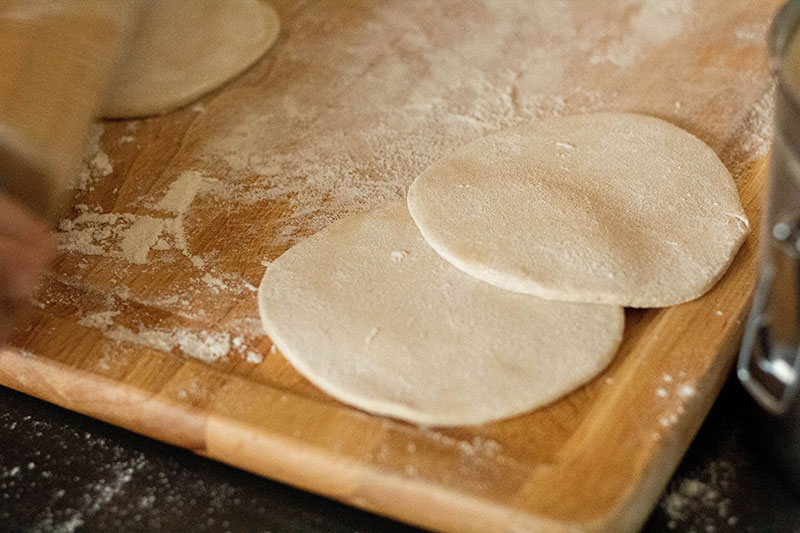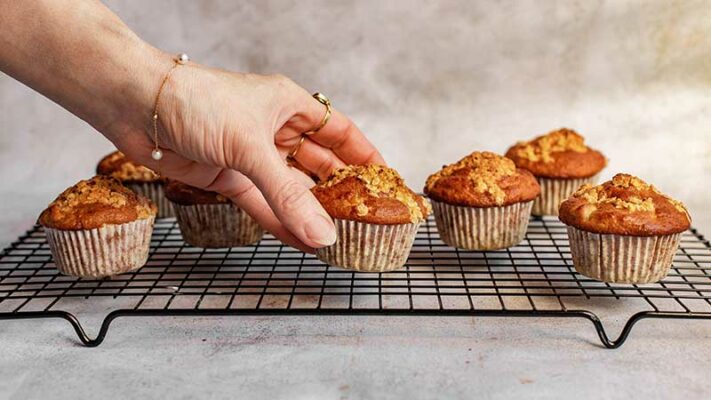The customer service team is always listening, taking notes, and quantifying complaints to ensure our products are continually improved. Due to selling directly to you, the customer, via Amazon, we can use product reviews to help us improve our existing products or help further development of new products.
The Ideal Temperature for Baking Homemade Bread
Table of Contents
Homemade bread knowledge is an age-old practice that dates to 2000 BC. The Egyptians were the pioneers of baking fermented bread before other baking methods began. In New Zealand, bread was among the earliest foods regulated through their Bread Ordinance and Sale of Bread Act of 1863. During those days, New Zealand settlers used two processes to bake bread; the Mechanical Dough Development methods and Bulk Fermentation method.
The latter method involved leaving the dough to rise for two hours until it can be divided into the desired sizes; a practice that remains relevant even today. The mechanical Dough Development method, on the other hand, involved mixing the dough at high speed to reduce the time it needs to rise to ten minutes.
During these days, bread was baked in communal ovens, large masonry ovens, or open fire. The massive masonry ovens yielded great results, but the open fire baked loaves that were inconsistent in flavor, texture, and doneness because it was difficult to maintain the required homemade bread baking temperature.
Modern inventions have made it somewhat easy to bake homemade bread. With electric ovens, bakers can easily regulate the temperature throughout the process of preparation, proofing, and baking. What’s more, the ThermoPro food thermometers allow bakers to control the temperature of bread baking more accurately to enhance the fermentation process and achieve more consistent texture. The discussion further elaborates everything about homemade bread.
Love Food? Sign Up to Learn More
Get food blogs, tips, tricks, recipes & offers!
Thank you!
You have successfully joined our newsletter. Use this coupon code to get 10% off your next order: newsletter10
The Ideal Temperature to Bake Bread during Preparation
a) Yeast Proofing
The temperature at which the dough is prepared affects how the yeast proofs and the final taste of the bread. Begin by pouring warm water into a bowl, adding sugar, and stirring until it has dissolved.
Ensure the temperature is within a range of 95 degrees Fahrenheit – 115 degrees Fahrenheit. Add a tablespoon of yeast and increase the temperature to 110-130 degrees Fahrenheit.
Using a higher temperature, e.g., 150 degrees Fahrenheit destroys the yeast before it proofs and temperature less than 105 degrees F causes the yeast to proof unevenly, which affects the final flavor of the bread.
Let the mixture sit for five to six minutes before adding flour; the first 2-3 minutes allow the yeast to dissolve into the water while the other three minutes help grow the yeast. Tiny bubbles should develop on the surface; however, if you are using musty yeast, it does not have any effect. It explains why the proofing process is essential before adding the flour.
b) Adding the Flour
Add room temperature flour and salt to the mixture. Avoid adding freezing flour as it causes the dough to take a long time to rise. Whole-grain flour, for example, is best stored in a freezer to prevent rancidification. If you are using such flour, it is advisable to remove it from the freezer before the preparation process to allow it to warm up to room temperature.
For accuracy, use a ThermoPro Lightning One-Second Instant-Read Thermometer to measure the temperature of the flour. Some people prefer sifting the flour through a sieve to increase its temperature. Mix the ingredients to prepare the dough for kneading. This process should take 6-8 minutes to create a smooth and less sticky dough.
Bread Baking Temperature: When the Dough is Rising
After kneading the flour, place it in a large, oiled bowl and cover it with a damp towel or a wrap for one to two hours to allow the yeast to grow. The optimal temperature for the fermentation process is within a range of 75-85 degrees Fahrenheit; lower temperatures cause the dough to take a longer time to ferment while higher ones produce unsavory flavors. If your oven has a proof function, you can set it at this temperature for better results.
During cold weather, the dough rises faster because the air is lighter than during hot weather. It explains why people living in high altitude areas should use a small amount of yeast. After the two-hour period, knead the dough to remove any stray bubbles.
You can allow a second rising after kneading it as there is twice as much yeast working in the dough. The second rising is optional and should last thirty minutes to an hour. Knead it again before shaping it.
Shaping the Dough
After kneading the bubbles out, allow the dough to sit for a few minutes before baking. This process helps the gluten to relax and makes shaping the dough easier.
If you are preparing the famous French bread, cut the dough in the middle to make two equal shapes. For the Italian style bread, cut the dough and make oval shapes for baking. Be sure to tuck the bottom into the rest of the dough so that it is not left exposed to create an even texture when baking.
Place the dough in a bowl and ensure the smooth side faces downwards. The bowl should be slightly oiled and floured to avoid sticking. Before placing the dough in the oven, cover the bowls with a damp towel to allow it to rise and leave it for an hour. Poke the dough gently on the side to determine if it’s ready for baking.
If it does not spring back immediately and the finger leaves a slight impression, it is ready for baking. The dough should rise reasonably to ensure it bakes evenly; over-risen dough does not result in a lighter loaf of bread. On the contrary, the dough collapses and forms dense, unsavory bread.
As such, if the dough over-rises after shaping, knead it out and reshape it. This is why experts advise bakers to use flour that can withstand several risings before the break down of gluten.
Dressing up the Dough for Baking
You can make simple patterns on the upper part of the dough by making cuts. The patterns create ample space for the bread to expand. You also want to dress up the dough for a shinier bronze surface. Egg white wash is a favorite among most people as it creates a glowing bronzed upper surface of the baked loaf.
However, if you want a crunchy crust, apply cold water on the top using a pastry brush. It not only creates a crunchy crust but also enhances the steaming process. Alternative ingredients used for dressing up the dough include whole egg wash, milk wash, butter, and egg yolk wash.
The temperature for Baking the Dough
What is the temp to bake bread? Actually, the ideal temperature depends on the type of bread you are baking. Lean-dough loaves of bread, for example, bake at 190-210 degrees Fahrenheit while heavier dough bread is done at 180-200 degrees F. There are two methods of baking bread; you can preheat the oven for 15 minutes to 475 degrees Fahrenheit or place the dough directly into the oven without preheating.
If you are preheating the oven, ensure you create steam by placing a pan filled with water and leave it to heat at that temperature (475). Other ways of creating moisture in the oven include:
- Misting: spray the water on the side of the oven and close the door. The heat converts water to steam to increase the moisture level in the oven.
- Using ice cubes: place a glass or ceramic bowl of ice cubes in the oven and leave it for 10-15 minutes. Remove the bowl when all the ice has melted.
Once the oven is preheated, add two to three cups of water to the pan before placing the dough on the rack for baking. Leave it to bake for 20 minutes though you can check for browning after 15 minutes.
If the crust is too brown, reduce the temperature to 450 degrees Fahrenheit. When fully baked, touch the underside of the loaf to see if it feels soft and hollow; if it doesn’t, leave it in the oven for five more minutes.
The recipe should help you determine the doneness of the loaf. Professional bakers recommend checking a few minutes before the actual baking time elapses especially if the crust is developing a dark color. Usually, the crust should have a golden brown color.
If you want a soft, crunchy crust, switch off the oven when the bread has baked and leave it for 5-10 minutes without opening the door. Properly done bread is firm; if it’s too hard, then it has been overdone. Breads that are too spongy, on the other hand, are undercooked and may need a few more minutes in the oven.
Times for Baking Different Types of Bread
| Type of Bread | Time |
| Thin flat bread | 5-15 minutes |
| Hearth breads, breads baked on flat places and large country round | 35-50 minutes |
| Buns and Rolls | 15-20 minutes |
| Quick breads | 45-75 minutes |
| Thick flat breads | 15-25 minutes |
| Basic loaves baked on a loaf pan | 45-60 minutes |
If you don’t want to serve the bread immediately, it is imperative to cool it properly immediately after baking. After removing it from the oven, place it on a raised wire rack to cool. The rack enhances uniform cooling by letting internal steam to escape through the crust. Additionally, it prevents the bottom part of the bread from getting damp as it would be the case it was left on a pan or other flat surface that traps the steam.
Final Step: Slicing the Bread
Allow the bread to cool before slicing it because it is more difficult to slice loaves immediately after removal from the oven. Place the bread on a flat, wooden surface and avoid using boards used for chopping veggies or meat to prevent contamination. Well, that’s the detailed guide on what temp to cook bread. We hope it can help you bake homemade bread easily.
Are you interested in getting a thermometer? ThermoPro offers a wide selection of meat thermometers, wireless thermometers, hygrometers, and more. Browse our online store to find your ideal thermometer!










